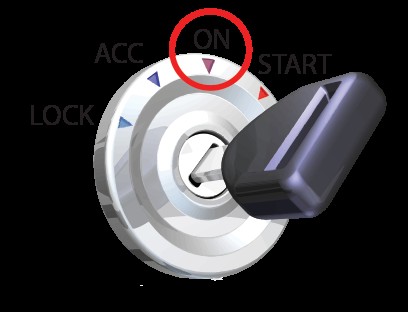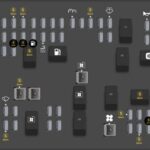Modern vehicles are incredibly complex, relying on sophisticated computer systems to manage everything from engine performance to emissions. Accessing this onboard diagnostic data can be invaluable for understanding your car’s health and troubleshooting issues. One of the most effective ways to tap into this information is by connecting an OBD2 adapter to your computer. This guide will walk you through How To Connect Obd2 To Computer, enabling you to diagnose problems, monitor performance, and gain deeper insights into your vehicle’s operation.
What You Will Need to Connect Your OBD2 Adapter to a Computer
Before starting, ensure you have the necessary equipment for a smooth connection. Here’s what you’ll need:
- OBD2 Adapter: This is the interface that plugs into your car’s OBD2 port. OBD2 adapters come in two main types:
- Bluetooth OBD2 Adapter: These wirelessly connect to your computer, offering convenience and flexibility.
- USB OBD2 Adapter: These provide a direct, wired connection to your computer, often preferred for stability and reliability.
- Windows Computer (Laptop, PC, or Tablet): This guide focuses on connecting to a Windows operating system.
- Vehicle with an OBD2 Port: All cars and light trucks manufactured in the USA after 1996 are OBD2 compliant and equipped with this port.
- OBD-II Diagnostic Software: Software like OBDwiz (mentioned in this guide) or other compatible applications is essential for interpreting the data from your vehicle.
Step-by-Step Guide: Connecting Your OBD2 Device to a Computer
Follow these steps to successfully establish a connection between your OBD2 adapter and your computer.
Step 1: Enabling Bluetooth on Your Windows Device (For Bluetooth Adapters)
If you are using a Bluetooth OBD2 adapter, you’ll first need to ensure Bluetooth is enabled on your Windows computer.
For computers with built-in Bluetooth:
- Click on the Start Menu in Windows.
- Go to Settings (the gear icon).
- Select Devices.
- In the left sidebar, click on Bluetooth & other devices.
- Make sure the Bluetooth toggle is switched to the On position.
If you are using a USB-to-Bluetooth adapter, you may need to install drivers provided by the manufacturer. Refer to the instructions that came with your adapter for driver installation.
Step 2: Finding the OBD-II Diagnostic Connector in Your Vehicle
The OBD-II diagnostic connector is a standardized port that is required to be located within easy reach of the driver from the driver’s seat. Here’s how to locate it:
- Common Location: The most frequent location is under the dashboard on the driver’s side, often below the steering column.
- Check Under Dash Area: Look for a 16-pin, trapezoid-shaped connector.
- Hidden Ports: Sometimes, the connector might be hidden behind a small plastic cover, an ashtray, or a coin tray. Check for any easily removable panels in the lower dashboard area.
- Consult Your Owner’s Manual: If you’re having trouble locating it, your vehicle’s owner’s manual will pinpoint the exact location of the OBD2 port.
Step 3: Plugging in Your OBD2 Adapter
Once you’ve located the OBD2 port, carefully plug in your OBD2 adapter.
- Align the Adapter: Make sure the adapter is correctly oriented with the port.
- Firm Connection: Push the adapter in firmly until it is securely seated in the connector. You should feel it click or fit snugly. Avoid using excessive force.
- LED Indicators: Most OBD2 adapters have LED indicators.
- Power LED: Typically, a green ‘Power’ LED will illuminate when the adapter is receiving power from the OBD2 port.
- Wi-Fi LED (for Wi-Fi models): Wi-Fi models may have a ‘Wi-Fi’ LED that flashes periodically to indicate it is ready.
Step 4: Turning the Ignition Key to the ‘ON’ Position
To allow the OBD2 adapter to communicate with your car’s computer, you need to turn the ignition key to the ‘ON’ position.
- ‘ON’ Position (Position II): Insert your car key into the ignition and turn it clockwise to the ‘ON’ position. This position is often marked as ‘II’ or simply ‘ON’.
- Before Starting Engine: Turn the key to the ‘ON’ position just before the point where you would start the engine. You want to power up the car’s electrical system without starting the engine.
Step 5: Making Your Bluetooth OBD2 Adapter Discoverable (Bluetooth Adapters Only)
This step applies only to Bluetooth OBD2 adapters. You need to make the adapter discoverable so your computer can find and connect to it.
- ‘Connect’ Button: Most Bluetooth OBD2 adapters have a ‘Connect’ or similar button. Press this button.
- Bluetooth LED Indicator: After pressing the button, the Bluetooth LED (often labeled ‘BT’) on the adapter will usually start blinking faster, indicating it is in pairing mode.
- Time Limit: Be aware that the adapter may only be discoverable for a short period (e.g., 2 minutes). If you need more time, you may need to press the ‘Connect’ button again.
Step 6: Pairing Your OBD2 Adapter with Your Windows Computer (Bluetooth Adapters Only)
Now, you will pair your Bluetooth OBD2 adapter with your Windows computer through the Bluetooth settings.
- Open Windows System Tray: Locate the system tray icons in the bottom right corner of your Windows taskbar.
- Right-Click Bluetooth Icon: Find the Bluetooth icon in the system tray and right-click on it.
- Select ‘Add a device’: From the context menu, click on ‘Add a device’.
Windows will start searching for Bluetooth devices in range.
- Select ‘OBDLink’: Your OBD2 adapter should appear in the list of discovered devices, often listed as ‘OBDLink’. Click on ‘OBDLink’ and then click ‘Next’.
- PIN Code (If Required): Depending on your Bluetooth adapter and Windows version, you might be prompted for a PIN code. If asked, enter ‘1234’ as the PIN. Some systems may use Numeric Comparison. If prompted to compare pairing codes, select ‘Yes’ and click ‘Next’.
- Pairing Success: Windows will display a confirmation message indicating that the OBD2 adapter (OBDLink) has been successfully paired and installed.
If pairing fails, repeat Step 5 and Step 6, ensuring the adapter is discoverable and you are entering the correct PIN if prompted.
Step 7: Installing OBD-II Diagnostic Software
With the physical and Bluetooth (if applicable) connections established, you now need to install OBD-II diagnostic software on your computer. OBDwiz is one example of compatible software.
- Download Software: Download the OBDwiz software from a reputable source, such as the official website. There are also many other OBD-II software options available depending on your needs and preferences.
- Install OBDwiz: Run the downloaded installer file (e.g., OBDwizSetup.exe) and follow the on-screen instructions to install the software on your Windows computer.
- Software Prerequisites: Ensure that you have successfully paired your Bluetooth OBD2 adapter (if applicable) and that your vehicle’s ignition is in the ‘ON’ position before proceeding to the next step.
Step 8: Initial Software Setup – Auto-Detect
Once OBDwiz is installed, you need to configure it to communicate with your OBD2 adapter.
- Launch OBDwiz: Open the OBDwiz application on your computer.
- Click ‘Auto Detect’: Look for an ‘Auto Detect’ button in the software interface (usually prominently displayed) and click it.
- Automatic Configuration: OBDwiz will automatically scan for available communication ports and baud rates to find your OBD2 adapter. This process automatically configures the software to work with your adapter.
- Device Found Confirmation: When the auto-detect process is complete, you should see a dialog box or message confirming that your OBD2 adapter has been found and configured.
Step 9: Connecting to Your Vehicle Through the Software
With the software configured, you can now establish a connection to your vehicle’s computer through OBDwiz.
- Click ‘Connect’ in OBDwiz: Locate the ‘Connect’ button in the OBDwiz interface (often a large, prominent button) and click it.
- Protocol Detection: OBDwiz will begin cycling through various OBD-II protocols to automatically detect the protocol used by your vehicle. A status screen will display the progress of this automatic protocol detection.
- ECU Selection (If Prompted): Modern vehicles often have multiple on-board computers (ECUs). OBD-II protocol allows connection to only one ECU at a time. OBDwiz may recommend connecting to the ECU reporting the most ‘Supported PIDs’ (Parameter IDs) first for comprehensive data access. Click ‘Continue’ to proceed with the recommended ECU or select an alternative if desired.
Step 10: Accessing Vehicle Data and Diagnostics
Congratulations! You have successfully connected your OBD2 adapter to your computer and your vehicle. Now you can access a wealth of diagnostic information and real-time data.
- Explore OBDwiz Tasks: In the OBDwiz main screen, you will see a list of tasks on the left-hand side. These tasks provide access to various diagnostic and monitoring functions. Common tasks include:
- Trouble Codes: Read and clear ‘Check Engine’ light trouble codes.
- Real-time Data: Monitor live engine parameters, sensor readings, and vehicle performance data.
- Emissions Readiness: Check the status of emissions systems for compliance.
- Trip Logging: Record and analyze trip data.
- Task Tabs and Actions: Each task in OBDwiz may have multiple tabs to provide more specific information or actions related to the selected task. Below each tab, you will typically find action buttons to initiate specific functions or data retrieval.
By exploring these features within your chosen OBD-II software, you can effectively diagnose vehicle issues, monitor performance, and gain a deeper understanding of your car’s inner workings. Connecting an OBD2 adapter to your computer opens up a powerful gateway to vehicle diagnostics and maintenance, empowering you with valuable insights and control.


